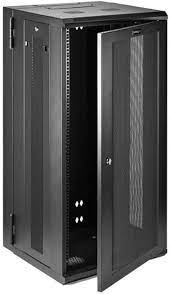Data centers are the beating heart of the digital age, housing critical infrastructure for businesses and organizations worldwide. Rack mount servers and switches are fundamental components within these environments, enabling efficient space utilization, improved cooling, and streamlined management. This white paper explores the key aspects of rack mount servers and switches, their critical role in data center operations, and considerations for their selection and deployment.
Rack Mount Servers and Switches for Data Centers: A Comprehensive Guide
1. Introduction
Data centers are the beating heart of the digital age, housing critical infrastructure for businesses and organizations worldwide. Rack mount servers and switches are fundamental components within these environments, enabling efficient space utilization, improved cooling, and streamlined management. This white paper explores the key aspects of rack mount servers and switches, their critical role in data center operations, and considerations for their selection and deployment.
2. Rack Mount Servers
- Definition: Rack mount servers are designed to be installed in standardized 19-inch racks, maximizing space utilization and facilitating easy maintenance and management within data centers.
- Key Characteristics:
- Form Factor: Available in various form factors, such as 1U, 2U, 4U, etc., denoting the height of the server in rack units.
- Processing Power: Utilize high-performance processors (e.g., Intel Xeon, AMD EPYC) to handle demanding workloads.
- Memory: High-capacity memory options for supporting large datasets and virtualized environments.
- Storage: Support various storage options, including hard drives (HDDs), solid-state drives (SSDs), and network-attached storage (NAS).
- Networking: Integrated network interfaces (e.g., Ethernet, 10GbE, 25GbE) for high-speed connectivity.
- Management: Advanced management features, including remote management capabilities and integrated management processors.
3. Rack Mount Switches
- Definition: Rack mount switches are network devices designed to be installed in 19-inch racks, providing high-speed connectivity and network management capabilities within data centers.
- Key Characteristics:
- High Port Density: Offer a high number of ports (e.g., 1G, 10G, 25G, 40G, 100G) to support a large number of connected devices.
- Layer 2/3 Switching: Support Layer 2 switching functions (e.g., VLANs, QoS) and Layer 3 routing capabilities for advanced network segmentation and traffic management.
- High Availability: Features like redundancy and hot-swappable components ensure high availability and minimize downtime.
- Management Features: Support advanced management features, including command-line interfaces (CLIs), graphical user interfaces (GUIs), and network management protocols (SNMP).
4. Considerations for Selection and Deployment
- Power Requirements: Determine the power requirements of servers and switches to ensure adequate power supply infrastructure.
- Cooling Requirements: Plan for effective cooling solutions, such as raised floors, fans, and air conditioning, to prevent overheating.
- Network Topology: Design a suitable network topology, considering factors such as redundancy, scalability, and security.
- Physical Space and Rack Space: Plan for adequate rack space and physical infrastructure to accommodate the number of servers and switches.
- Budget: Determine the budget constraints and select servers and switches that meet performance and budget requirements.
- Vendor Selection: Choose reputable vendors with strong support and maintenance services.
5. Use Cases
- Data Centers: Core infrastructure for hosting servers, storage, and networking equipment.
- Cloud Computing: Supporting cloud computing platforms, including public, private, and hybrid clouds.
- High-Performance Computing (HPC): Enabling high-performance computing applications, such as scientific research and financial modeling.
- Enterprise IT: Supporting critical business applications, such as email, databases, and enterprise resource planning (ERP) systems.
6. Conclusion
Rack mount servers and switches are essential components of modern data centers, enabling high performance, scalability, and efficiency. By carefully considering factors such as performance, power consumption, cooling, and management, organizations can select and deploy the most suitable hardware to meet their specific needs and build a robust and reliable data center infrastructure.
References:
- Intel: https://www.hpe.com/us/en/home.html
- Cisco: [invalid URL removed]
- Juniper Networks: [invalid URL removed]
Disclaimer: This white paper provides a general overview of rack mount servers and switches for data centers. The specific requirements and considerations will vary depending on the individual needs and constraints of each organization.
